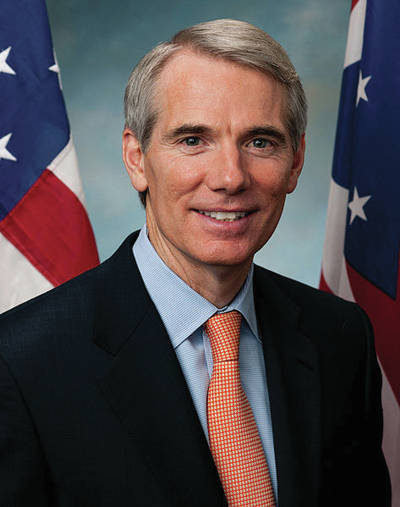
Earlier this month marked a momentous breakthrough in our efforts to safeguard our public lands when President Trump signed into law my Restore Our Parks Act — bipartisan legislation that will protect and conserve our national parks for generations to come.
I have worked for years to get this important legislation passed to protect America’s treasures.
Ohio is home to eight incredible National Park sites that need to be preserved. From the sprawling Cuyahoga Valley National Park, which protects more than 33,000 acres of natural lands in Northeast Ohio, to smaller sites like the boyhood home of President William Howard Taft in my hometown of Cincinnati, all of these parks are monuments to the history of our country and great places to visit.
Unfortunately, Ohio’s park sites, and many other park sites around the country, have deferred maintenance because annual funding for the parks have not kept pace with maintenance needs.
In some places, that lack of funding has led to crumbling trails and unusable parking lots. In others, the woodwork and roofing of historic homes and buildings are rotting away.
Over the years, I have repeatedly visited Ohio’s national park sites to see this maintenance backlog firsthand. Earlier this summer, I visited Wilberforce, Ohio, to see the home of Charles Young, who was the first Black colonel in the United States Army and the first Black superintendent of a national park.
What’s more, the home was also a site on the Underground Railroad, giving it even greater historical significance. But this single important National Park site alone requires more than $2 million for essential repairs to its foundation and other maintenance needs.
It’s the same story elsewhere in our state.
In June, at Cuyahoga Valley National Park, I saw rusted railroad tracks and unsafe bridges that contribute to a more than $50 million backlog there, while at the Perry’s Victory and International Peace Memorial at Put-In-Bay, Ohio, a crumbling seawall and other hazards require about $48 million worth of repairs against a budget that is a fraction of that amount.
In total, Ohio’s eight park sites require more than $100 million in urgent maintenance needs, while nationwide there is a more than $12 billion backlog.
These repairs should have been made a long time ago, and the costs only keep increasing the longer we wait. In this sense, these repairs are a debt unpaid to the American people.
The good news is that the Restore Our Parks Act pays those debts. By using unobligated revenues from energy development on federal lands and waters, the Restore Our Parks Act will allow us to address over the next five years the highest-priority repairs needed at our national parks, about $6.5 billion of the $12 billion backlog.
Although this funding will not cover every needed repair, this is truly a historic level of support — never before have we had so much funding go towards fixing up the parks.
The benefits don’t stop at getting our parks back into shape — the Restore Our Parks Act will benefit our economy, too.
The repair projects funded by this law will directly or indirectly support more than 100,000 jobs, according to a study by the National Park Service. It’s a good long-term investment, too — as of 2019, visitor spending in communities near our national parks resulted in a $41.7 billion benefit to the nation’s economy and supported 340,500 jobs.
The Restore Our Parks Act is a reaffirmation of America’s commitment to protecting its greatest treasures — our national parks. More than 100 years ago, when Teddy Roosevelt created the National Park system, he envisioned these monuments to history and nature standing tall for the rest of time.
Thanks to the funding provided by the Restore Our Parks Act, we will be able to get our parks back in shape and make that vision a reality.
Senator Rob Portman (R-Ohio) represents the state in the U.S. Senate.


